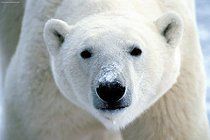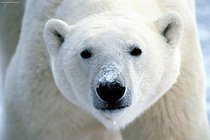Radical emission cuts to protect polar bears
The polar bear, which is deemed close to extinction, could be saved if urgent action is taken to enforce severe emission cuts, a study confirms.

 The polar bear, which is deemed close to extinction, could be saved if urgent action is taken to enforce severe emission cuts, a study confirms.
The polar bear, which is deemed close to extinction, could be saved if urgent action is taken to enforce severe emission cuts, a study confirms.
The study, "Critical Materials Strategy", published on Wednesday (15th December 2010) in the journal Nature, goes against previous reports that suggest temperatures in the Arctic are well on track to exceed the threshold required to cause rapid ice loss.
It is believed by many that the point of no turning back has been reached, however researchers from Polar Bears International said the sea ice, which polar bears use as a platform to hunt seals and breed, may not undergo rapid decline. "It's widely believed that nothing can be done to save the polar bear," said author Steven Amstrup of Polar Bears International in Winnipeg, Canada. "But that's not true."
The report comes in parallel with another study released from Friends of the Earth. The report, also released on Wednesday, confirms concerns that international governments are setting emission reduction targets dangerously low if the world is to avoid catastrophe.
It is believed that setting targets so low is allowing governments to willfully gamble with human lives. The report from Polar Bears International provokes appreciation of the effect global warming has on other species and biodiversity.
According to Andrew Derocher, a polar bear expert based at the University of Alberta in Edmonton, Canada, Amstrup's study is the first to investigate whether a campaign to decrease emissions will benefit polar bears. "Mitigation [of carbon emissions] was not considered by any of the analyses to date," he said.
Amstrup's team used global climate models and five scenarios of the level of GHG emissions to estimate sea ice loss in the Arctic over the next century. The study suggests that there will be a linear relationship between temperature and sea ice: as temperatures rise, the amount of sea ice will decline smoothly.
If emissions continue to rise at today's rate, two-thirds of polar bears will disappear by 2050, the models suggest. Populations in Hudson Bay, Baffin Bay, the Southern Beaufort Sea and Barents Sea will be hit the hardest. Amstrup also believes the amount of optimal polar bear habitat in the Arctic will fall by 50 per cent.
Although polar bears are endangered, they are not condemned to extinction, suggests the study. Stringent emissions cuts of 70 per cent by 2100 would limit habitat loss to just 20 per cent and save the polar bear, states the paper.
"Reduced emissions would yield greater abundance and wider distribution of polar bears than the 'business as usual' emission scenario," said Derocher.
The study comes just days after the 16th Conference of Parties (COP16) closed on Friday (10th December 2010) without having reached an international binding agreement on climate change. Nations involved in the UN climate summit in Cancun agreed to make non-binding emission cuts, with some countries, including Japan and the US declining to sign a new Kyoto agreement. Non legally binding promises will need to be relied upon until COP17 in Durban, South Africa in 2011.
Derocher is sceptical that policymakers will act to curb emissions in time. "There are few indications that such policies will be implemented in a timely manner. Globally, 25 per cent of mammalian species are threatened with extinction and, in this context, the plight of polar bears is sadly typical," he said.
Loss of habitat isn't the only threat to Arctic species such as the polar bear, according to a separate paper, "The Arctic Melting Pot", published in Nature this week. As sea ice melts, species that have been separated for thousands of years are expected to start to interbreed, generating novel hybrid species and driving existing rare species extinct.
"When human activities abruptly alter environments, it can increase the frequency of hybridisation, which can have negative effects, including pushing some species toward extinction," said lead author of the study Brendan Kelly, who is based at the National Oceanic and Atmospheric Administration, Juneau, Alaska.
Kelly carried out a survey of published literature on hybridisation. He counted 34 hybridisation events between distinct populations, species and genera in marine mammals living in or near the Arctic.
The review was biased toward the most recent decades and focused on the Arctic Ocean, where ice forms a diminishing barrier between marine mammals. Of the 22 species that had hybridised, 14 were listed as endangered, threatened or of special concern in more than one country.
A white bear with brown patches killed by Inuit hunters in 2006 was revealed via DNA tests to be half-polar bear, half grizzly hybrid. In the late 1980s, a hybrid narwhal-beluga was seen off the west coast of Greenland, and last year, a hybrid bowhead-right whale was photographed in the Bering Sea.
According to actionbioscience.org: "In a case of quantum evolution, polar bears evolved rapidly to exploit a vacant ecological niche as a specialized predator of seals." Polar bears are believed to have evolved from the brown bear, and it is considered that the bears could be adept to changing once again according to the climate, if temperatures do not rise too high.
In light of recent studies, it appears that more stringent emission cuts are required globally to protect endangered species, and the hope is that the coming year will see further climate negotiations internationally.
Author: Marianna Keen | Climate Action
Image: flickfavorites | Flickr






